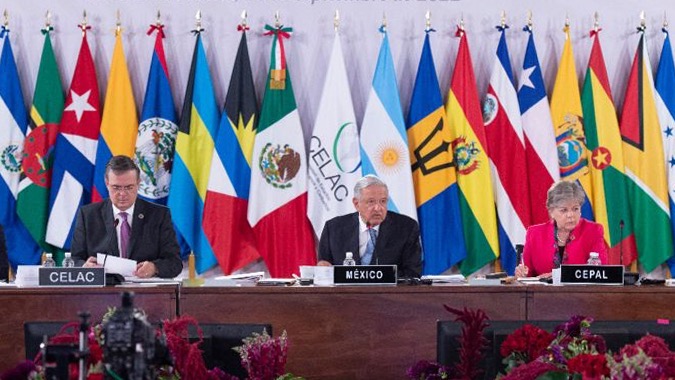South America's Migrant & Refugee Integration: A Model for Inclusive Societies

Updated at: 2025-02-24 22:42:07 (8 months ago by Melkisedeck Leon Shine)
Social Integration of Migrants and Refugees in South America: A Comprehensive Approach
The global landscape is increasingly interconnected, presenting the challenge of integrating migrants and refugees into their new societies. South America, a region rich in cultural diversity and a long history of migration, stands as a vital case study in fostering inclusion. This article examines contemporary community and social development issues across the Americas, focusing on South America's strategies for successful migrant integration and emphasizing the importance of unity and collaboration.
Understanding South America's Diverse Landscape: South America’s vibrant cultural mosaic—a blend of ethnicities, languages, and traditions—forms the foundation of its approach to integration. Acknowledging and celebrating this diversity is paramount to creating truly inclusive societies. This requires not just tolerance but active engagement with and appreciation of the richness each cultural group brings.
Building Inclusive Communities: Successful integration hinges on providing migrants and refugees with the tools to actively participate in all aspects of life. This means readily accessible language courses, robust vocational training programs equipping them with marketable skills, and guaranteed access to quality healthcare. These fundamental necessities are essential building blocks for successful integration and self-sufficiency.
Empowering Newcomers: Recognizing the inherent skills and potential of migrants and refugees is crucial. South American nations are actively working to empower newcomers through entrepreneurship programs that provide resources and mentorship, and through financial support designed to help them establish themselves and contribute economically. This focus on empowerment shifts the narrative from dependence to contribution.
Cultivating Multicultural Education: Educational institutions play a pivotal role. Incorporating multicultural curricula into schools not only teaches tolerance but fosters empathy, respect, and understanding among students from diverse backgrounds, creating a foundation for future collaborative coexistence.
Sustainable Economic Integration: Economic inclusion is the cornerstone of successful social integration. South American governments actively implement policies that facilitate the entry of migrants and refugees into the workforce, acknowledging their valuable economic contributions and fostering a sense of belonging through economic participation.
Strengthening Social Networks: A sense of belonging is vital. South American countries are actively establishing community centers, support groups, and cultural associations to build strong social networks, facilitating connections and helping migrants and refugees feel supported and less isolated within their new communities.
Fostering Intercultural Dialogue: Open and respectful dialogue is crucial to breaking down stereotypes and prejudices. South American nations organize numerous events—festivals, workshops, and community gatherings—to promote cross-cultural understanding and build bridges between different groups.
Addressing Mental Health and Trauma: Migration is often a traumatic experience. Recognizing this, South American countries are implementing comprehensive mental health programs that provide counseling and support to address the psychological challenges faced by migrants and refugees, providing critical support for their overall well-being.
Ensuring Legal Protection: Legal protection underpins safety and well-being. South American governments are strengthening legislation to protect the rights of migrants and refugees, creating a more welcoming and secure environment and encouraging further migration based on a foundation of trust and security.
Advocacy for Policy Change: Civil society organizations and human rights activists are vital advocates for policy change. By raising awareness and mobilizing public support, these groups play a critical role in driving positive changes that prioritize integration and inclusion.
Promoting Social Cohesion: South American countries are actively promoting social cohesion through cultural events, sports competitions, and volunteer initiatives that bring together all residents, fostering a sense of shared identity and belonging beyond national origin.
International Collaboration: South America actively collaborates with international organizations like the United Nations and the International Organization for Migration. This collaboration facilitates the sharing of best practices, knowledge exchange, and advocacy for global solutions to migration challenges, fostering a collective approach to the issue.
Leveraging Digital Platforms: Digital platforms provide vital tools for integration. South American governments are using these platforms to provide information, resources, and support to migrants and refugees, making navigating their new lives easier and more efficient.
Inter-American Cooperation: Collaboration between North and South America is vital. By sharing experiences, best practices, and resources, a united front can amplify the impact of inclusion efforts across the continent.
Individual Action: Individual actions collectively create impactful change. Educating ourselves, engaging in open dialogue, and supporting local initiatives are all critical steps towards building more inclusive societies. Every individual contribution contributes to a larger movement for inclusivity.
Conclusion: The social integration of migrants and refugees is a complex undertaking requiring sustained collective efforts. South America's progress demonstrates the potential for success, yet continuous work is needed. By enhancing our understanding of community and social development, we can actively contribute to fostering unity and ensuring the successful integration of migrants and refugees, building a more inclusive and compassionate future for the Americas.
Questions for Reflection:
- What actions can you undertake in your community to support migrant and refugee integration?
- What inspiring social integration programs or initiatives exist in your region?
- How can educational institutions further enhance their role in promoting social integration?
- What innovative ways can digital platforms be used to facilitate migrant and refugee integration?
- How can we continue raising awareness and advocating for the rights of migrants and refugees in the Americas?
Share this article to promote unity and understanding: #SocialIntegrationInAmericas #InclusionEfforts #PromotingUnity

